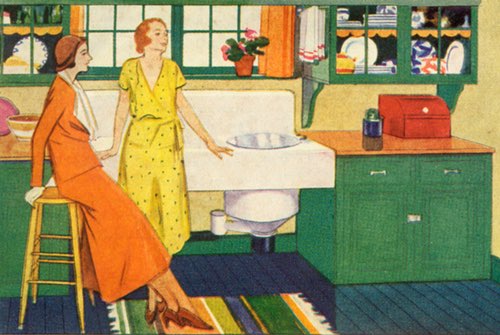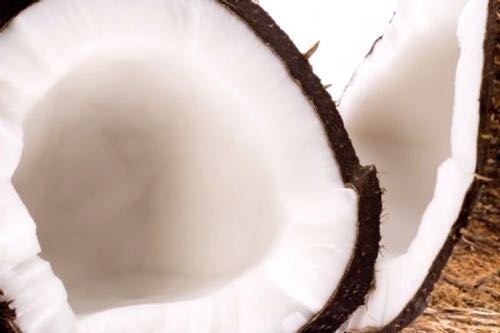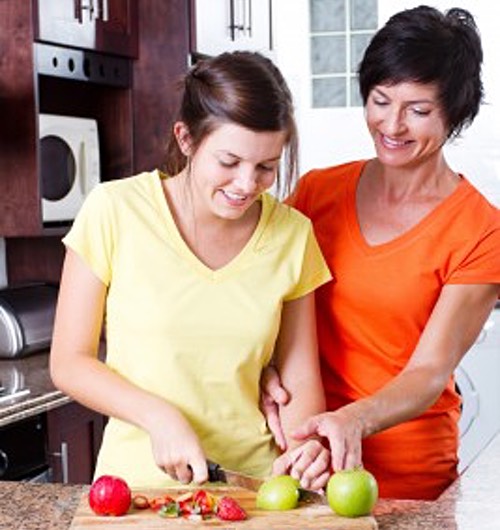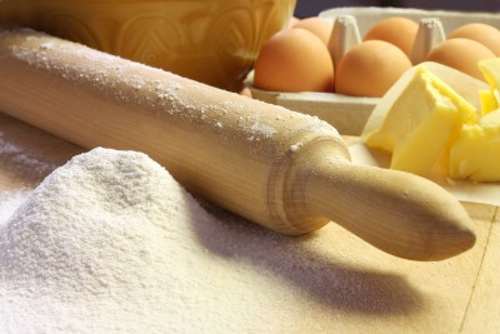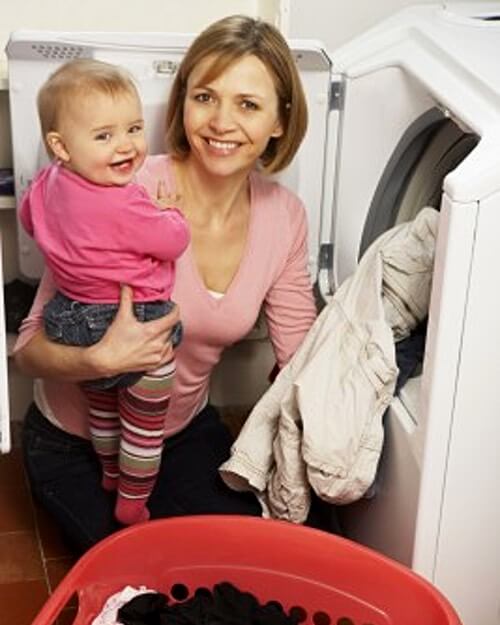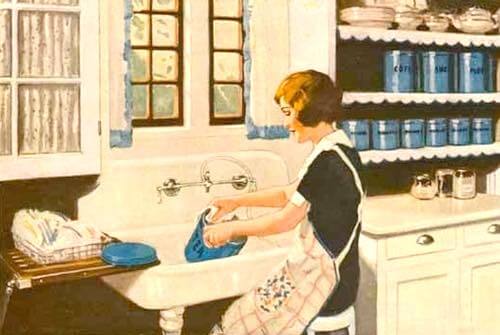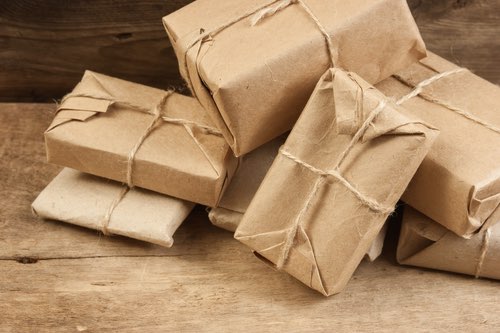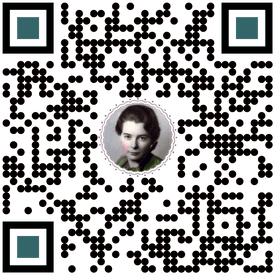- Home
- Recipe Help & Misc
- Cooking Weights and Measures
Cooking Weights and Measures
Old fashioned cooking weights and measures like the gill, grain, scruple, and dram are seldom used today, so if the quantities called for in Grandma's dessert recipes seem unclear, simply refer to the handy kitchen measures conversion tables below.
And if you're still unsure, you can always do what Grandma did. She simply took what she called an "educated guess."
Cooking Weights and Measures
Compiled from Vintage Cookbooks (1800s)
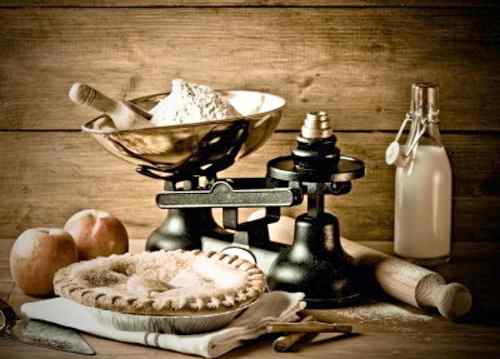 Always Use Scales for Accurate Ingredient Weights
Always Use Scales for Accurate Ingredient Weights(Source: ©chris-elwell/123RF)
These kitchen measures are level, unless otherwise specified. Because of the loss or gain of moisture constantly happening in dry ingredients, exact measures are not possible.
But for home cooking and baking, these old fashioned cooking weights and measures are approximately correct.
 Level, Rounding, and Heaping Spoon Measures
Level, Rounding, and Heaping Spoon Measures(Source: ©Don Bell)
- About 25 drops of any thin liquid = 1 teaspoonful
- 1 Pinch = 4-1/2 grains, or less than 1/8 teaspoonful
- 1 Saltspoonful = 1/4 teaspoonful
- 1 Scruple = 20 grains, or about 1/2 teaspoonful
- 3 Saltspoonfuls = 1 dram (drachma), or 27-1/3 grains
- 1 Teaspoonful = 4 saltspoonfuls, or 36-1/2 grains
- 4 Teaspoonfuls = 1 tablespoonful liquid
- 2 Tablespoonfuls, or 16 drams (drachmas) liquid = 1 fluid ounces
- 4 Tablespoonfuls = 1 wineglass, or 1/2 gill, or 1/4 cupful
- 2 Wineglasses = 1 gill, or 1/2 cupful
- 2 Gills = 1 coffee-cupful, or 16 tablespoonfuls, or 8 fluid ounces
- 1 Tumblerful = 1 coffee-cupful, or 1/2 pint
- 1 Goblet = 10 fluid ounces
- 2 Coffee-cupfuls = 1 pint
- 2 Pints = 1 quart
- 4 Quarts = 1 gallon
- 16 Ounces = 1 pound, or 1 pint of liquid
A set of measuring cups (with small lips), from 1 pint to 1/4 cup, will be found convenient in every kitchen, though common pitchers, bowls, glasses, teacups, wineglasses, etc., may be substituted.
When seen in historical recipes, "cts" refers to "cents" as in 5 cts oil of lemon. The difficulty is in knowing the quantity of the ingredients that could have been purchased for 5 cents even if the recipe's date of origin is known.
All you can do is experiment by approximating the quantities called for after studying similar recipes that provide standard amounts.
Old Fashioned Cooking Weights and Measures
Compiled from Vintage Cookbooks (1800s)
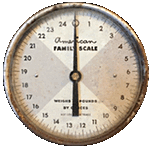
Equivalent Measures are level unless otherwise indicated.
Salt
- 1 tablespoonful of salt = 1 ounce
Granulated Sugar
- 8 rounded tablespoonfuls of granulated sugar = 1 cupful
- 2 cupfuls of granulated sugar = 1 pound
- 1-1/2 coffee-cupfuls of granulated sugar = 1 pound
- 1 pint of granulated sugar = 1 pound
Confectioners' Sugar
- 3-1/2 cupfuls of powdered (confectioners') sugar = 1 pound
- 2 coffee-cupfuls of powdered (confectioners') sugar = 1 pound
- 1-1/3 pints of powdered (confectioners') sugar = 1 pound
Brown Sugar
- 2-1/2 cupfuls of best brown sugar = 1 pound
- 1-3/4 coffee-cupfuls of best brown sugar = 1 pound
- 1 pint of best brown sugar = 13 ounces
Chocolate
- 1 square Baker's chocolate = 1 ounce
- 3 tablespoonfuls of grated chocolate = 1 ounce
Coffee
- 4-1/3 cupfuls of coffee = 1 pound
Flour
- 2 teaspoonfuls of flour, heaped = 1 tablespoonful
- 4 tablespoonfuls of flour = 1 ounce
- 7 to 8 rounded tablespoonfuls of flour = 1 cupful
- 4 cupfuls of pastry or bread flour = 1 pound
- 3 coffee-cupfuls of sifted flour = 1 pound
- 1 quart of sifted flour, heaped = 1 pound
- 1 quart of unsifted flour = 1 pound 1 ounce
- 3-7/8 cupfuls of whole wheat flour = 1 pound
- 4-1/2 cupfuls of graham flour = 1 pound
- 4-1/8 cupfuls of rye flour = 1 pound
Rolled Oats
- 4-3/4 cupfuls of rolled oats = 1 pound
Meal
- 2-2/3 cupfuls of oat meal = 1 pound
- 2-2/3 cupfuls of corn meal = 1 pound
- 3-1/2 cupfuls of Indian meal = 1 quart
- 2-3/4 coffee-cupfuls of Indian meal = 1 quart
- 1 quart of sifted Indian meal = 1 pound 4 ounces
Yeast
- 1 Fleischmann's® 0.6-ounce yeast cake = 1 envelope dry yeast
- 1 Fleischmann's® 2-ounce yeast cake = 3 envelopes dry yeast
Baking Powder
- 6 tablespoonfuls of baking powder = 1/2 ounce
Dry Ingredients
- 1 pinch of salt or sugar or dry ingredient = 4-1/2 grains or less than 1/8 teaspoonful
- 16 tablespoonfuls of any dry ingredient = 1 cup
Butter
- Butter the size of a walnut = 1 ounce
- Butter the size of an egg = 2 ounces
- 1 tablespoonful of soft butter, well rounded = 1 ounce
- 4 tablespoonfuls of soft butter, heaped = 1 cupful
- 1 cupful of butter, pressed down = 1/2 pound
- 2 cupfuls of butter, pressed down = 1 pound
- 1 pint of soft butter = 1 pound
Lard
- 2 cupfuls of lard = 1 pound
Honey
1 tablespoon = 1/2 fluid ounce
1/4 cup = 2 fluid ounces
1/3 cup = 2.7 fluid ounces
1/2 cup = 4.1 fluid ounces
3/4 cup = 6.1 fluid ounces
1 cup = 8.1 fluid ounces
If honey is warmed before use it becomes thin enough to pour (drizzle) in a fine stream making its handling easy. If measures and spoons are lightly smeared with cooking oil, honey will not stick to them.
Chopped Meats
- 2 cupfuls of finely chopped meat = 1 pound
- 1 pint of finely chopped meat = 1 pound
Eggs
- 10 ordinary-sized eggs = 1 pound
- 9 large-sized eggs = 1 pound
Milk
- 2 cupfuls of milk = 1 pound
Rice
- 1-7/8 cupfuls of rice = 1 pound
Raisins
- 2 cupfuls of raisins, packed = 1 pound
- 3 cupfuls of raisins = 1 pound
Currents
- 2-1/4 cupfuls of currents = 1 pound
Bread Crumbs
- 2 cupfuls of stale bread crumbs = 1 pound
Fruits
- 40 small prunes = 1 pound
- 28 large prunes = 1 pound
- 75 apricot pieces = 1 pound
- 3 large bananas = one pound
Old Fashioned Yeast Cake Measures
Cake Yeast has been sold in different sizes formerly, so it's easiest to calculate the dry yeast needed based on how much flour is called for in the recipe. For instance:
- Up to 4 cups flour, use 1/4 ounce (2-1/4 teaspoons) of dry yeast
- 4-8 cups flour, use 1/2 ounce (4-1/2 teaspoons) dry yeast
- 8-12 cups flour, use 3/4 ounce (6-3/4 teaspoons) dry yeast
- 12-16 cups flour, use 1 ounce (9 teaspoons) dry yeast
How to Use Old Fashioned Cooking Weights and Measures
For cooking and baking, weights and measures conversion tables were vitally important to 19th-century cooks. They were always an important section in published cookbooks.
Many kitchens didn't have the luxury of accurate weigh scales and some didn't even have a proper set of measuring cups. So, available containers such as cups and wineglasses were used as kitchen measures, and ingredient quantities were often approximated.
The old fashioned cooking weights and measures conversion tables can help us to measure the ingredients called for in Grandma's old fashioned dessert recipes.
For example, if you know the weight of one ingredient, the weight of another can most often be guessed. For instance, if 1 cup of butter, pressed down, equals one-half pound, you could estimate that 1 cup of lard would equal the same weight — close enough for most recipes.
And if you know one measurement, another can be obtained. For instance, 2 wineglassfuls equal 1 gill, or 1/2 cup.
Yes, historical cooking weights and measures can still be of help in today's modern kitchens, especially with Grandma's recipes. After all, she maintained it's always good to have some "scruples."
Sorry about the pun! And just if you might be wondering, a scruple is 1/2 teaspoon.
Do you need additional help with cooking weights and measures? Convert-Me is a site with Calculators that convert between U.S., British, Canadian, and European kitchen units. (This page will remain open, so you can easily return to it.)
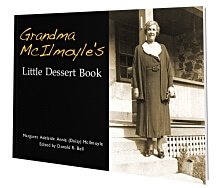
Sign Up now for GRANDMA'S DESSERT CLUB and download your FREE PDF COPY of Grandma McIlmoyle's Little Dessert Book. Also receive my regular Bulletin featuring classic recipes and nostalgia.
